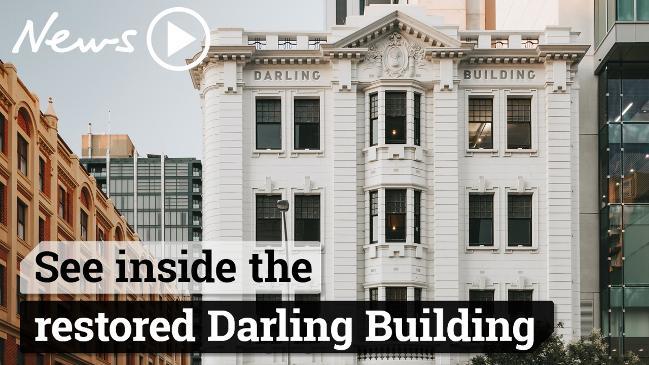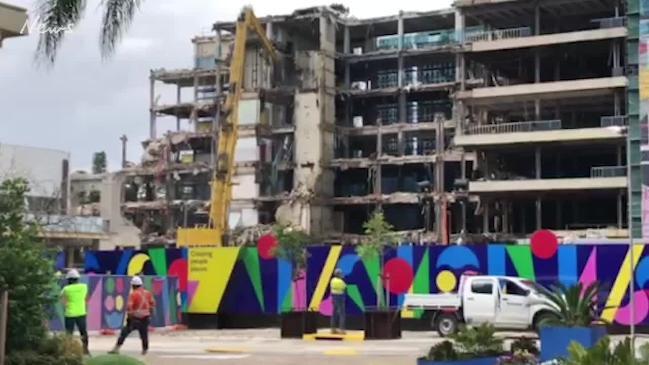Historic SA buildings at risk of demolition because of confusing heritage laws
Potentially thousands of historic buildings across the state are at risk of demolition because a complex and confusing heritage system is leaving them unprotected, an inquiry has heard.

- Historic cottages torn down, to be replaced by carpark
- Outrage as cottages demolished — and then tower project abandoned
- State heritage-listed properties affected by funding cuts
Potentially thousands of historic buildings across the state are at risk of demolition because a complex and confusing heritage system is leaving them unprotected, an inquiry has heard.
Heritage advocates, councils and government agencies want an overhaul of how historic properties are managed and protected, arguing the current system, particularly for local-heritage properties, is not working.
And in a strongly worded submission to a parliamentary heritage inquiry, one council boss has said the state has reached a “new low” in protecting its heritage.

But a lobby group for developers has renewed calls for nearly 12,000 so-called “contributory items” — which have limited heritage protection — to be removed from development plans making it easier for them to be demolished.
Nearly half of South Australia’s 68 councils — largely in regional areas — do not have local heritage registers, with cost and lack of government support cited among reasons for the lack of protection, submissions to the inquiry have said.
The Environment Resources and Development Committee of State Parliament is holding a heritage inquiry that has received 143 submissions.
Among reforms echoed by councils and heritage advocates are:
PUTTING state and local heritage items under a single act and register;
HAVING A CENTRAL body, such as theSouth Australian Heritage Council, manage all heritage listings rather than just State heritage-listed properties;
TAKING management of locally heritage-listed places out of control of the Planning Minister and bringing it under the auspices of the Environment Minister, who is responsible for state heritage;
INDIVIDUALS being allowed to nominate items for local-heritage protection, with those properties afforded emergency protection preventing their demolition until their nomination has been considered;


GREATER consistency in assessment and listing of properties to give owners and the public greater confidence in why something has, or hasn’t, been afforded protection; and
INCREASING grants, incentives and heritage advice for owners of heritage buildings and making it easier for them to undertake repairs.
The National Trust of SA advocates for all heritage listings to be managed by the SA Heritage Council and an independent expert committee to review nominations with final approval given by Environment Minister David Speirs.
Trust chief executive Dr Darren Peacock said the local heritage protection system — under which 7168 buildings were listed — had become confused, in part, because of poor legislation and administration.
“The Planning Department has been a very poor administrator of heritage protection and that’s why we have all this confusion around local heritage, contributory items and historic conservation zones,” he said.
“Councils have had to work through slow and cumbersome State Government processes which lack transparency and accountability to try to protect the places that local communities value.
“Where we’ve really failed in South Australia is this whole area of what we generically call local heritage, that’s what is now at risk because of poor administration … it’s the local places that people often care most about.

“We think the time has come for a more efficient and integrated heritage protection system that is administered independently of the state planning system to ensure that the protections the community want are simply and properly administered.”
SA Heritage Council chief Keith Conlon said the current development plan process for local heritage listing was “cumbersome, protracted, politicised and expensive”.
“As evidence of that, and the consequences, some greater metro councils have no local heritage registers at all, like Salisbury and Adelaide Plains. Most regional councils have no heritage register, some have gone through doing heritage DPAs and then pulling back,” he said in evidence to the committee.
“The processes that are associated with local heritage listing need not be identical to those of the state, but we believe reform opportunities are available that would provide a streamlined, cost-effective nomination, assessment and public consultation process for local heritage, and a significant reduction in red tape and costs associated with that listing.”
Holdfast Bay Council chief executive Justin Lynch wrote in his council’s submission that the state’s “current obsession with unlocking investment” left “every building” vulnerable.

He wrote that the practice of approving “inappropriate structures” next to important historic buildings along main streets, such as The Parade at Norwood, Jetty Rd at Glenelg and South Tce in the city, had created a “new low in the application of public policy”.
“Now that Adelaide has experienced the mini ‘development boom’ of the past 5-10 years, it is time to take stock of what is important from (the character and heritage perspectives) of our built environment and demand better planned/designed/integrated buildings from our development industry,” he said.
The Urban Development Institute of SA in its submission has reiterated previous concern over the contributory items and that they serve “little benefit” and only generate “confusion and inconsistency” between councils.
The ERD Committee is expected to deliver its report early next year.
Early settler home fails to win protection
ONE of the last remaining settler homes along the River Torrens has failed to receive State Heritage protection.
The SA Heritage Council has decided not to include Lochiel Park House, also known as Hobbs House, on the State Heritage Register. It decided the property failed to meet any of the seven criteria required, voting 5-3, with one abstention, against inclusion.
The decision has upset the Friends of Lochiel Park, which made the nomination based on extensive research by resident and academic Dr Roger Irvine.
Dr Irvine and members of the group, including Campbelltown mayor Jill Whittaker, attended the meeting which rejected the application.

“All members of our delegation were very disappointed and indeed shocked by the outcome,” he said. “We considered … that we produced comprehensive and conclusive supporting evidence.”
Dr Irvine said the group found it “ironic” the application was rejected as the council was celebrating the 40th anniversary of the introduction of legislation to protect heritage buildings.
Lochiel Park House, a two-storey bluestone villa, was built in 1875 by pastoralist David Mundy on land originally owned by the founder of Campbelltown, Charles James Fox Campbell.
Dr Irvine said it would be a “major tragedy” if Lochiel Park House — “the most outstanding candidate in the area for State Heritage-listing” — was lost to the community.
— Colin James
Our confusing regulations
COUNCILS WITHOUT LOCAL HERITAGE REGISTER
Adelaide Plains, Barunga West, Berri Barmera, Ceduna, Cleve, Coober Pedy, Coorong, Copper Coast, Elliston, Franklin Harbour, Goyder Regional Council, Grant, Karoonda/East Murray, Kimba, Loxton Waikerie, Mount Remarkable, Northern Areas, Orroroo/Carrieton, Port Augusta, Port Lincoln, Renmark Paringa, Roxby Downs, Southern Mallee, Streaky Bay, Salisbury, Unincorporated SA, Whyalla, Wudinna District, Yankalilla, Yorke Peninsula.
STATE HERITAGE
■ Anyone can nominate an item for inclusion.
■ SA Heritage Council considers heritage listings on advice from state heritage branch.
■ Items must satisfy one or more of the following criteria:
● demonstrates important aspects of the evolution or pattern of the state’s history;
● has rare, uncommon or endangered qualities that are of cultural significance;
● may yield information that will contribute to an understanding of the State’s history, including its natural history;
● is an outstanding representative of a particular class of places of cultural significance;
● demonstrates a high degree of creative, aesthetic or technical accomplishment or is an outstanding representative of particular construction techniques or design characteristics;
● has strong cultural or spiritual associations for the community or a group within it, or;
● has a special association with the life or work or a person or organisation of an event of historical importance.
■ Demolition not normally supported. All development applications for State heritage items are referred to the Environment Minister for comment.
■ Environment Minister can approve removal of an item from the State Heritage Register.
■ Recent examples include Maughan Church in the city and Union Hall (above), which were subsequently demolished.
LOCAL HERITAGE
■ Governed through the Development Act.
■ Councils, via heritage consultants, recommend to Planning Minister properties for listing via amendments to the Development Plan. The Minister can veto nominations.
■ Items must satisfy one or more of the following criteria:
● displays historical, economic or social themes that are of importance to the local area;
● represents customs or ways of life that are characteristic of the local area;
● has played an important part in the lives of local residents;
● displays aesthetic merit, design characteristics or construction techniques of significance to the local area;
● is associated with a notable local personality or event;
● is a notable landmark in the area, or;
● is a tree of special historical or social significance or importance within the local area.
■ Demolition only allowed with council approval but generally opposed.
■ Alternations or additions must be sympathetic to the original building.
CONTRIBUTORY ITEM
■ Surviving examples of older buildings within historic conservation zones/areas of a council, which collectively contribute positively to the historic and architectural character of the area. Are not in themselves deserving of individual listing.
■ Demolition permitted but with council approval.


